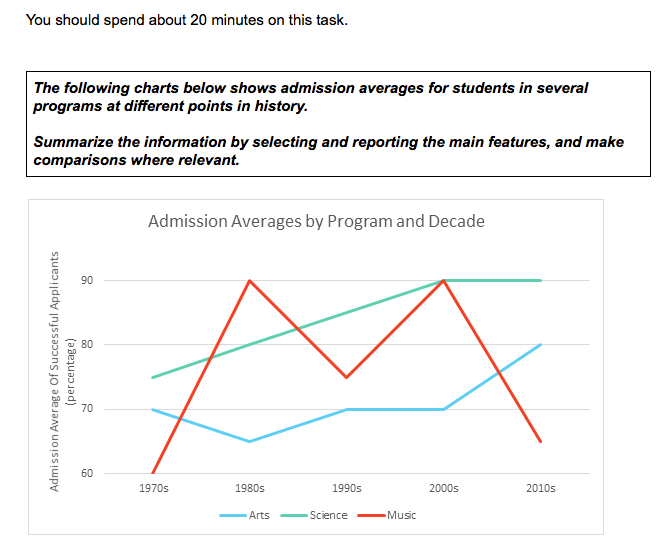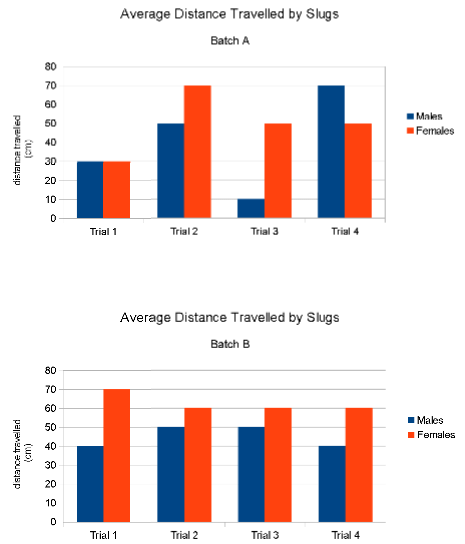Training with practice tests is the best way to practice for the IELTS exam. We have prepared a list of practice tests for you for the IELTS Academic Writing Task 1, feel free to check them at out as well as our main IELTS practice tests page if you wish to train for all the sections of the exam.
Free IELTS Practice Tests: Academic Writing
IELTS Academic Writing – Practice Test #1
IELTS Academic Writing – Practice Test #2
IELTS Academic Writing – Practice Test #3
IELTS Academic Writing Task 1: Free Practice Tests
Down below you will find various IELTS Academic Writing Task 1 practice tests, ranging from easy to hard :
You should spend about 20 minutes on this task.
The two pie charts below show psychologists’ employment after graduating.
Summarize the information by selecting and reporting the main features, and make comparisons where relevant.
Write at least 150 words.Model answer:
The above charts show employment setting data for psychologists, comparing their anticipated work sites to their actual work sites. The first chart shows that most psychologists expect to be employed in private clinics, while smaller numbers of graduates expect to work in hospitals/medical centres or schools/universities.The data for actual place of employment show that most psychologists actually end up working in schools and universities, rather than private practices. A large number, about one quarter, also end up working in community agencies. Only about 15% of graduates were employed in private practices, compared to the 65% who had expected to work in those agencies. Also, only 3% of graduates went on to work in hospitals or medical settings. Altogether, the data show that actual employment varies considerably from anticipated employment and that school/university work and community agencies.
Write at least 150 words.
Model Answer:
This chart gives the admission averages of successful applicants for several types of programs across the span of 5 decades.
Admission averages were generally the highest and on an upward trend in science programs, peaking at 90% in the 2000s and 2010s. In music programs, admission averages varied erratically, starting at 60% in the 1970s and peaking at 90% in the 1980s and 2000s before falling to 65% in the 2010s. Arts admission averages were somewhat more stable, hovering at 70% in the 1970s, 1990s, and 2000s and fluctuating only as low as 65 and as high as 80. Admission averages were consistently higher in science than in arts, whereas music admission averages were at times the lowest of all and at times on par with science applicants.
Given the limited amount of data for analysis, it is difficult to draw conclusions or predict future admission averages. However, this chart presents a snapshot of general trends and volatility in admission averages across the decades.
You should spend about 20 minutes on this task.
The two graphs below show the average distance travelled by slugs during a scientific experiment.
Summarize the information by selecting and reporting the main features, and make comparisons where relevant.
Model Answer:
The above graphs show data for distance travelled by both male and female slugs in two different groups and across four trials. In Batch A, performance varies considerably across the trials and for both sexes. Distance travelled ranges from only 10 centimeters by the male slugs in Trial 3 to 70 centimeters travelled by both the female slugs in Trial 2 and the female slugs in Trial 3. There is no apparent correlation between slug sex and distance travelled, as for some trials the female slugs travel farther and for others it is the males who travel the greatest distance. In Batch B, contrastingly, distance travelled is much more consistent across the trials and between the sexes.
Distances span from 40 centimeters to 70 centimeters for an overall range of 30 centimeters, compared the 60 centimeter range in Batch A. Also, female slugs consistently outdistanced male slugs across the trials. Thus, slug travel patterns appear to differ substantially for slugs in Batch B compared to Batch A.
IELTS Academic Writing Task 1: A Step-by-Step Guide
In this section we will be addressing how to plan out your Task 1 exercise.
1. Carefully read the question
Read the question carefully, although the instructions will often be similar, you need to focus on answering all the aspects of the question.
2. Write a plan
Although you are under time pressure, it’s still essential that you do not start writing immediately, but instead take a few minutes to plan your answer so that your writing will be clear and structured. The plan does not need to be detailed but it should help you to organise your ideas and anticipate the language you will need to use.
You need to identify the main trends in the graph before you start. In this example plan you can see that the candidate has written a short description for each line on the graph, and a final note detailing a point of comparison.
3. Write the introduction
Once you have decided on your key points, you can start writing. You need to write a clear introduction, imagine that the person who is reading it cannot see the graph so you need to include the key information.
4. Highligh the key information
As you can see in the suggested answer, the candidate has paraphrased the question, using alternative words such as “gives” instead of “shows” and “across the span of five decades” instead of “at different points in history”.
5. Write an overview
In the final line of his paragraph the candidate makes a comparison between the trends for the three programs, explaining their relative popularity at different points in time. Writing an overview like this is essential as the examiner will look for this when deciding your score for Task Achievement.
6. Write the conclusion
You do not need to say much, remember you are not asked to interpret the data or make predictions. Indeed, the candidate here says it is not possible to “predict future averages” but states in general terms what the graph is about. It’s not essential that you write a conclusion but you can very briefly summarise your findings:
Always take time to read these and take notes that you can reuse and recycle in your own essays. Of course, memorising a complete answer and copying it in an exam is a very bad strategy. But practicing at writing your own essays and becoming comfortable using the type of language required for the exam is an excellent way to prepare for writing an organised and well-worded essay on the day of the exam.
Key Points to Keep in Mind
After training for this task, you will need to practice for the IELTS Writing Task 2, which is more important.
Practice for the IELTS on GlobalExam’s Online Platform
On the GlobalExam platform, you can practice in real exam conditions thanks to many exercises and mock exams. All our content follows the pattern of the test and the question types, so you can become familiar with it and improve your score! You will get corrections for the exercices, as well as explanations, along with study sheets if you need to reviex some specific points. You can register for free and check our trial version.
Are you wondering what you will find in the trial version? Access to 27 different tests, including DELF, TOEIC and TOEFL. We have over 30,000 questions, which our pedagogical experts prepare and update regularly. In addition to this, you have access to practice tests, sample answers and explanations as well as exercises.
You can also keep track of your progress with your own personal study statistics. You can focus on specific grammar and vocabulary points, as well as using sample papers to improve your score! Let GlobalExam help you get the score you want by signing up today!







